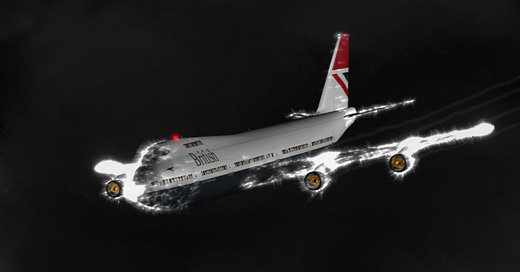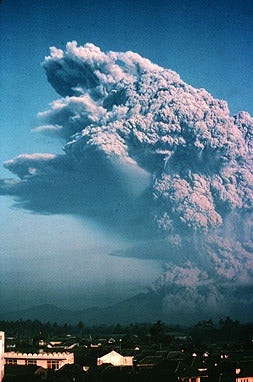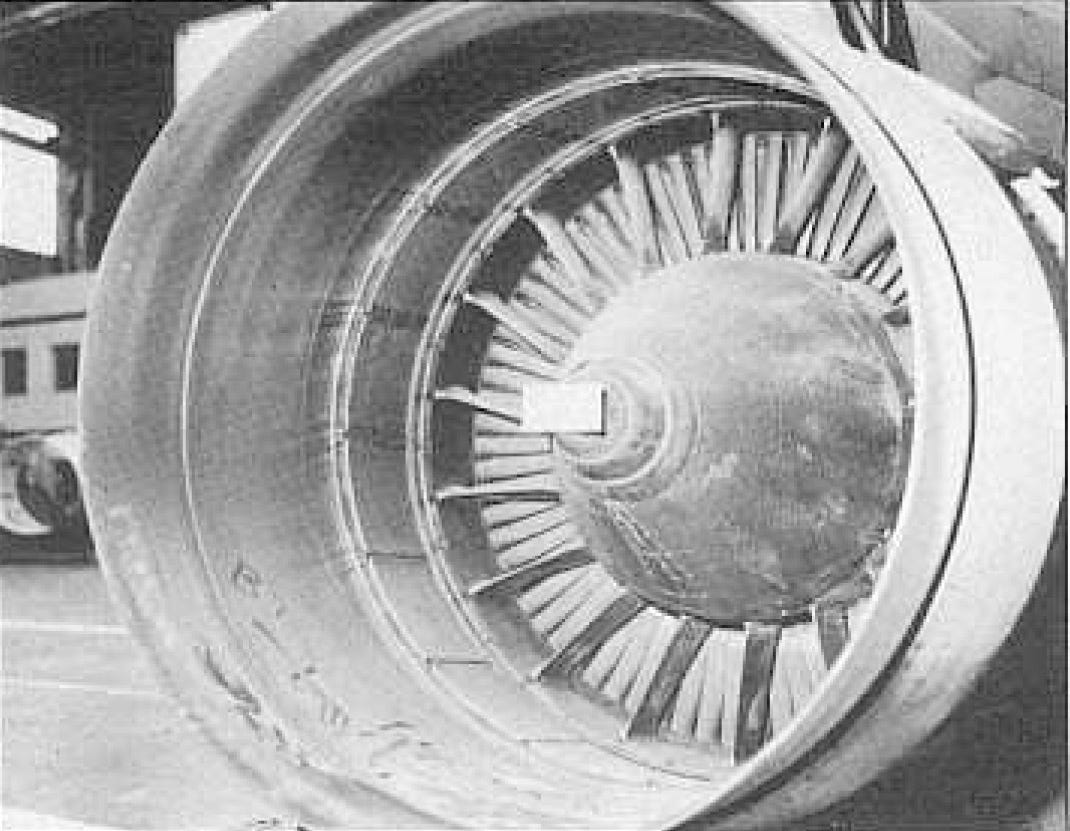Having written about Mexico’s Popocatépetl volcano recently, I began looking at past incidents of aircraft engine damage due to volcanic ash. Little did I know that Indonesia’s Mount Lewotobi Laki-Laki volcano would rumble to life soon after. So it is timely to explore BA Flight 009 which lost power to all four engines back in 1982 due to another Indonesian volcano Mount Galunggung.
BA009 was a multi sector long haul route - London- Bombay- Kuala Lumpur- Perth- Melbourne- Auckland using a “classic” Boeing jumbo jet 747-236.
This was still in the golden age of air travel. Passengers dressed elegantly and the airlines ensured that travel was an enjoyable and memorable event for all the right reasons.
And so the flight in question was the sector from Kuala Lumpur, Malaysia to Perth, Australia on the 24th June 1982. The 747 was registration G-BDXH, named City of Edinburgh. Under the command of Captain Eric Moody, First Officer ( FO) Roger Greaves and Flight Engineer ( FEO) Barry Townley-Freeman. In addition to the 3 technical crew, there were 12 cabin crew and 248 passengers on board.
Due to the aircraft arriving late in Kuala Lumpur, the flight departed approximately 30 minutes behind schedule. Otherwise the departure was unremarkable and the aircraft climbed and reached a cruise altitude of FL370 or 37000 feet.
After approximately two hours into the flight, and just passing Jakarta in Indonesia, Captain Moody checked the weather radar and satisfied it was clear of anything requiring his attention stepped into the upper deck cabin to use the crew toilet.
Noting it was already in use, he walked downstairs to access a first class bathroom when he stopped to speak to a flight attendant. At that point another crew member who had been using the upper deck toilet told the Captain he was needed back in the flight deck.
Ascending the stairs, Captain Moody observed smoke coming from air vents in the wall and then noticed an electrical-type, acrid odour. Entering the flight deck at approximately 20:40, he observed that the windows were filled with St Elmos Fire. St Elmos Fire is made of electrically charged particles, not in itself dangerous and can be quite spectacular. These particles are usually found in conjunction with thunder storms but Captain Moody could not see any weather on his radar.
The pilots could also see that the four engines and both wings were aglow with what looked like a bluish light.
Not long afterwards at approximately 20:42 hours, the number 4 engine surged then failed. In quick succession all three remaining engines also failed.
At 20:44 a Mayday call was made but communication was affected by static and the air traffic controller believed he heard that number 4 engine failed not that all 4 engines had failed. Given the language differences, static and highly unlikely occurance of ALL 4 engines failing, the miscommunication was understandable. Another aircraft relayed the correct message to Jakarta ATC on behalf of BA009.
The tech crew were observing many inconsistencies, for example the presence of St Elmos Fire but no storms in the vicinity and acrid smoke coming from the vents.
As the aircraft was now flying over water and without power, Captain Moody did not want to risk having to ditch in the ocean, a situation with a high chance of a bad outcome. He initiated a left turn to head back towards Jakarta and he lowered the nose to maintain airspeed - if there was no thrust from the engines this would lead to reduced airspeed and ultimately a stall.
Without engine thrust, the 747-200 series can glide 15 kilometres for every 1 kilometre it drops- ie 15:1. The mountainous terrain over Indonesia dictated that the lowest safe altitude for flight was 11,500 feet. Should it be necessary to descend lower than that 12000 feet, they would need to turn back towards the ocean and attempt a ditching in the water.
Another consequence of the engine failures was that the cabin started to depressurise. As the aircraft cabin altitude dropped, so did the the oxygen masks in the passenger cabin. The pilots donned their own oxygen masks but the First Officer’s mask detached from the tube connecting it to the oxygen supply. To ensure that the first officer did not lose consciousness, the Captain increased the rate of descent to an altitude where enough oxygen was available to maintain consciousness for the F.O. without an oxygen mask.
Captain Moody then made what is now considered to be a legendary P.A.
“Ladies and gentlemen, this is your captain speaking. We have a small problem. All four engines have failed. We are doing our damnedest to get them going again. I trust you are not in too much distress.”
From the time the engines failed, the crew attempted restarting the engines repeatedly and estimate that the engine restart checklist would have been followed around 50 times.
At 13500 feet altitude, the crew were about to reach a point where they needed to head towards the ocean and attempt a ditching. However they continued to run the engine restart checklist. To their surprise engine number 4 came to life and this thrust was used to climb to a safer altitude. Shortly thereafter the remaining engines also restarted.
As they continued climbing the crew became aware of St Elmos Fire on the windscreen and engine number 2 started to surge once more and was deliberately shut down.
Despite not knowing what was causing the problem, the crew quickly realised that St Elmos Fire and the engine surges had been a factor in their earlier problems. They needed to return to the lower altitude of 12000 feet and BA009 headed towards Halim airport in Jakarta (CGK) .
The crew’s dramas were not over yet! As they got closer to CGK they noticed the flight deck windows had been damaged and apart from one small sliver, they could not see outside to land the aircraft. Despite all of this a successful landing was made.
Amazingly, there was no official report into the incident. As a consequence research for this article has relied on the crew and ground engineer’s retelling of the event in interviews over the years. Surprisingly I cannot find any images of ash still on the aircraft surfaces.
Following: Summary Of Engine Damage- Wikipedia
Postflight investigation revealed that City of Edinburgh's problems had been caused by flying through a cloud of volcanic ash from the eruption of Mount Galunggung. Because the ash cloud was dry, it did not appear on the weather radar, which was designed to detect the moisture in clouds. The dust in the cloud deprived the engines of sufficient oxygen from the atmosphere to maintain combustion, sandblasted the windscreen and landing-light covers, and clogged the engines. As the ash entered the engines, it melted in the combustion chambers and adhered to the inside of the power plant. As the engine cooled from inactivity, and as the aircraft descended out of the ash cloud, the molten ash solidified and enough broke off for air to again flow smoothly through the engine, allowing a successful restart. The engines had enough electrical power to crank, ignite, and restart because one generator and the on-board batteries were still operating.
N.B. My Bold to highlight mechanism of engine restart
From Simple Flying:
Despite its nearly tragic nature, Flight 009 also made way for a beautiful marriage. In 1993, Betty Tootell married James Ferguson, whom she met on the flight. They remained together until 2015 when James passed away. According to Tootell, they never lost their love for flying.
Betty wrote a book “All Four Engines Have Failed” about her experience.







